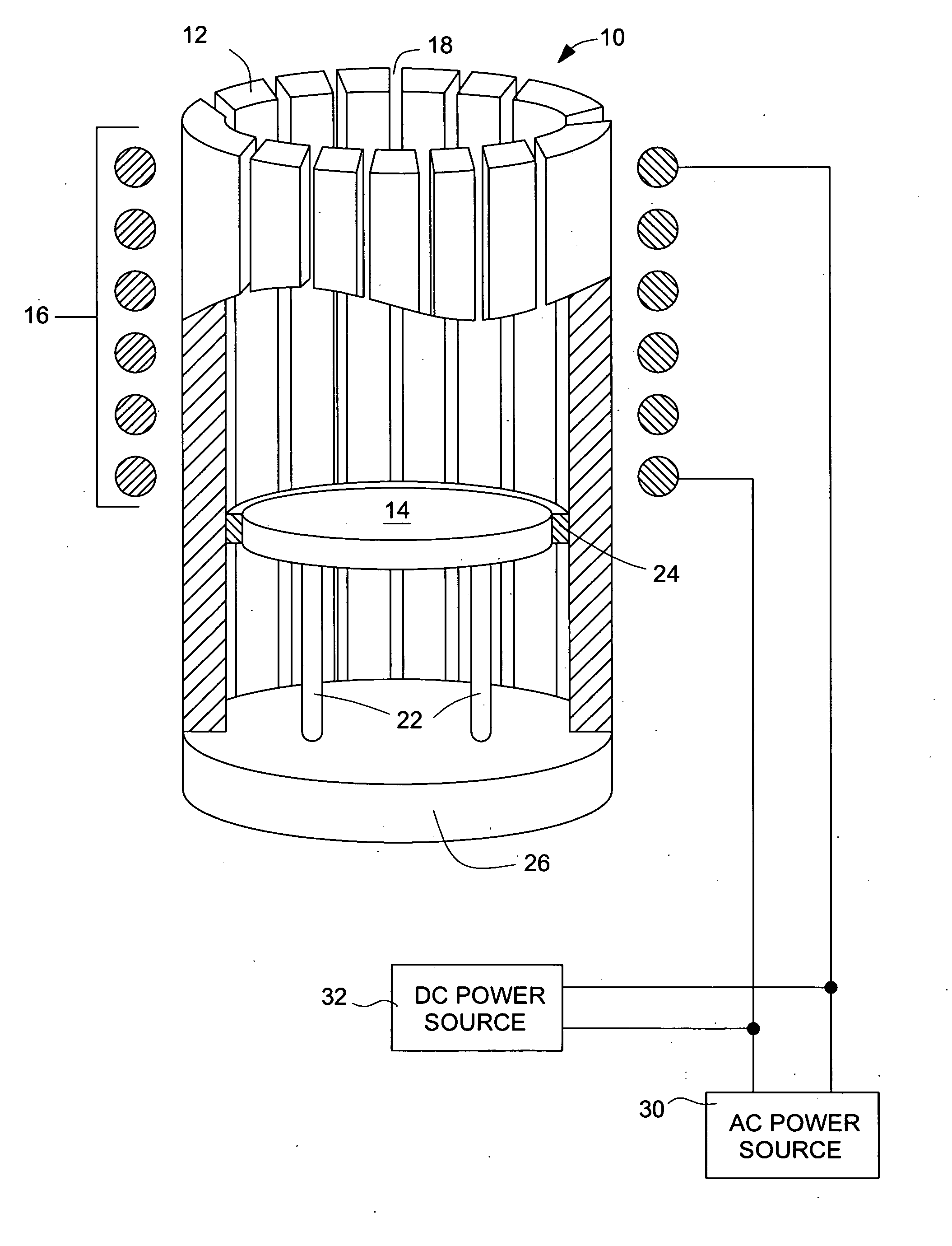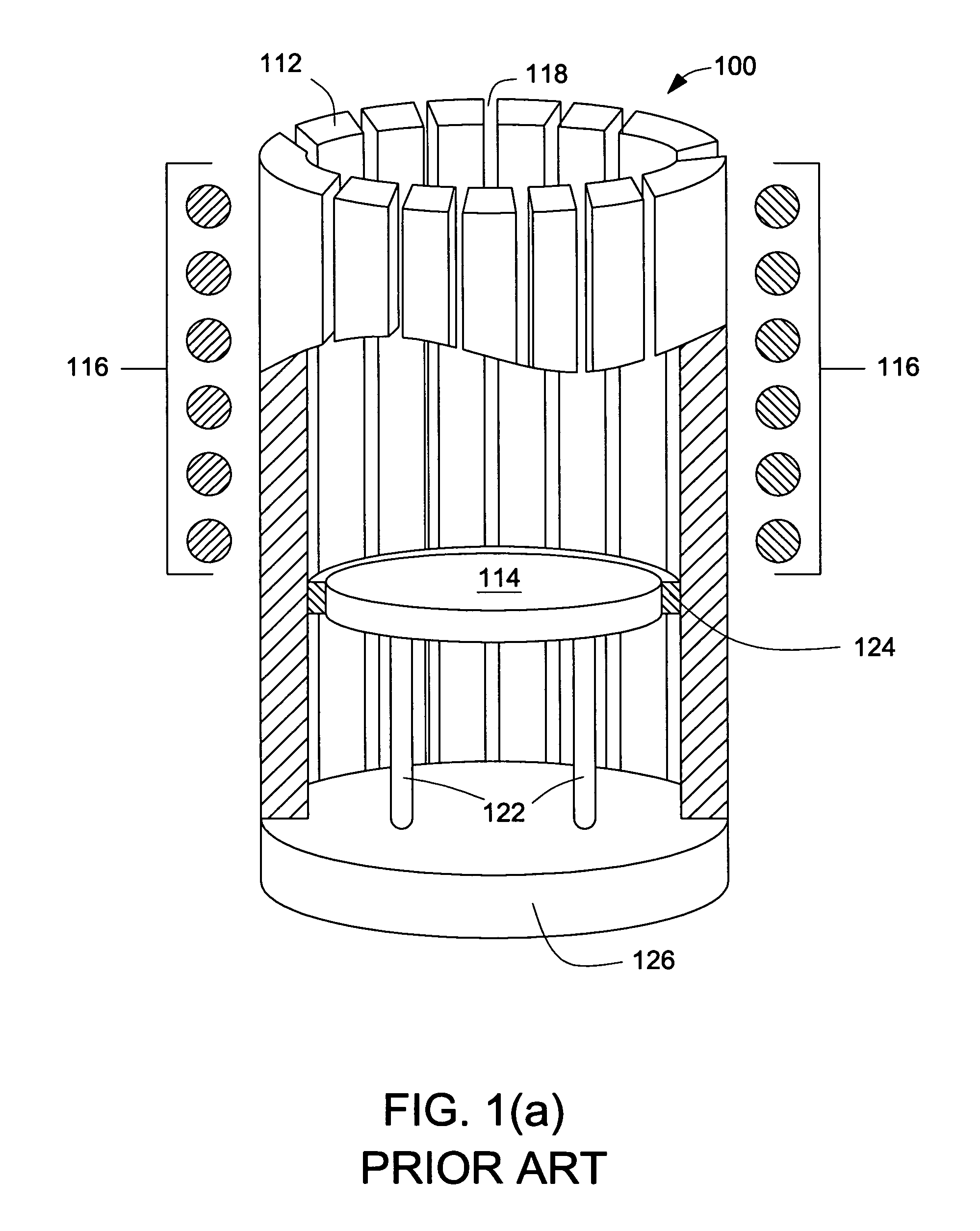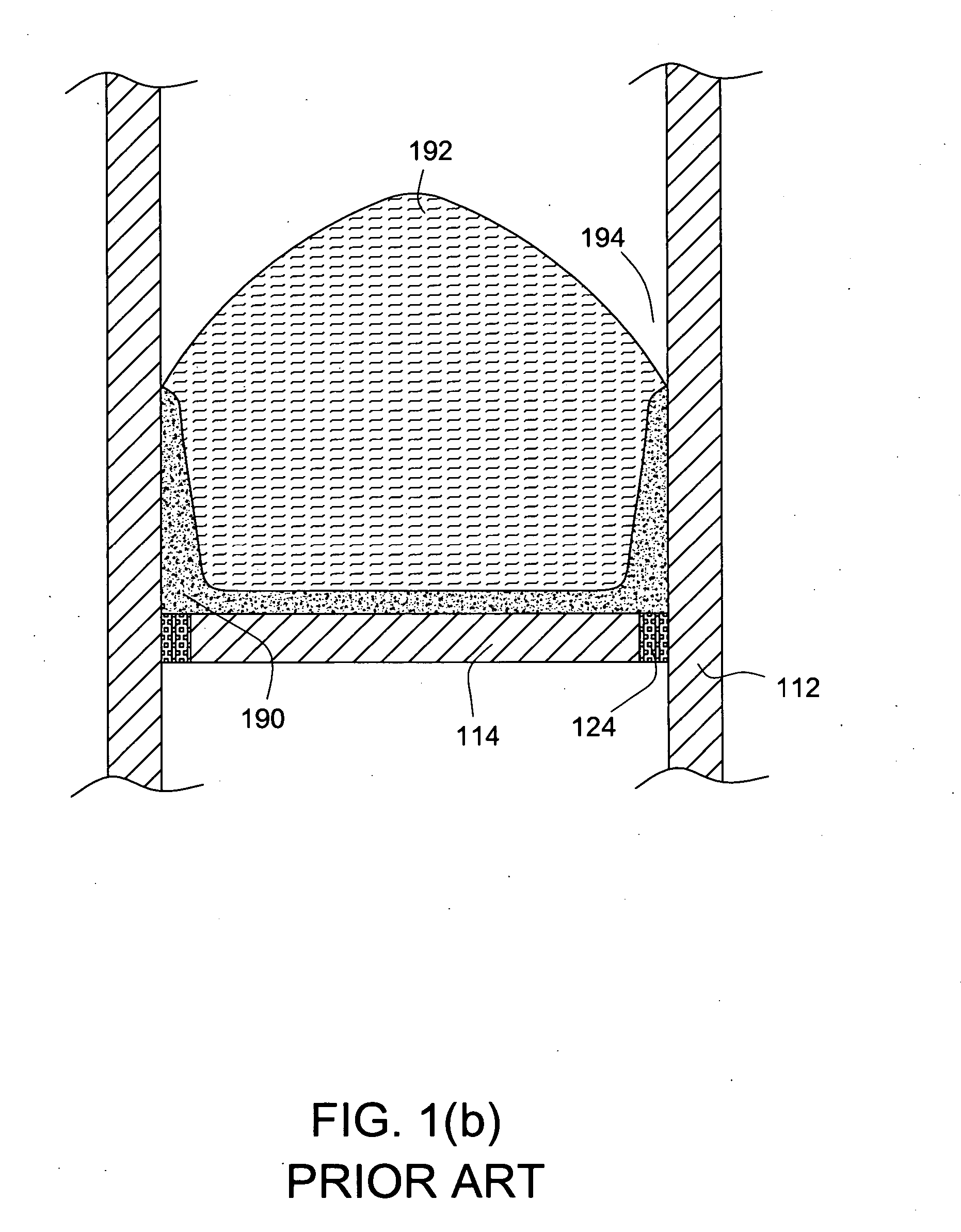Cold crucible induction furnace with eddy current damping
a technology of eddy current damping and cold crucible, which is applied in the direction of furnaces, charge manipulation, lighting and heating apparatus, etc., can solve the problems of increasing conduction loss, increasing heat radiation loss from liquid, and intermittently disturbing the separation region between the walls, so as to selectively reduce the motion of the molten material
- Summary
- Abstract
- Description
- Claims
- Application Information
AI Technical Summary
Benefits of technology
Problems solved by technology
Method used
Image
Examples
Embodiment Construction
[0020] As used in this specification, the term “induced currents” generally refers to currents induced by an ac coil and the term “eddy currents” generally refers to currents generated by the movement of molten electrically conductive material across dc field lines. There is shown in FIG. 2, one example of a cold crucible induction furnace 10, with eddy current damping, of the present invention. For this example crucible 10 may comprise a cold crucible with wall 12 having slots 18, and base 14. The base may be separated from the wall by a layer of thermal and electrical insulation 24. The base may be raised above bottom structural support element 26 by suitable support means 22. Induction coil 16 is wound at least partially around the height of wall 12. Induction coil 16 is suitably connected to ac power source 30. AC current provided from the ac power source flows through coil 16 and establishes an ac field that penetrates into wall 12 and an electrically conductive material placed...
PUM
| Property | Measurement | Unit |
|---|---|---|
| charge | aaaaa | aaaaa |
| width | aaaaa | aaaaa |
| clarity | aaaaa | aaaaa |
Abstract
Description
Claims
Application Information
 Login to View More
Login to View More - R&D
- Intellectual Property
- Life Sciences
- Materials
- Tech Scout
- Unparalleled Data Quality
- Higher Quality Content
- 60% Fewer Hallucinations
Browse by: Latest US Patents, China's latest patents, Technical Efficacy Thesaurus, Application Domain, Technology Topic, Popular Technical Reports.
© 2025 PatSnap. All rights reserved.Legal|Privacy policy|Modern Slavery Act Transparency Statement|Sitemap|About US| Contact US: help@patsnap.com



